You’ve built some cool SaaS stuff, right? It clicks for businesses or solves real problems for people. You see the growth, the endless scaling, and that steady income – the base of any smart setup.
But that great product sitting online won’t sell itself. That’s where SaaS marketing comes in. It’s different now. It’s about making real connections, showing your value constantly, and guiding users as paying members. Think of it as more than just talking about it; it’s building a group.
The numbers are clear. The global SaaS market is projected to reach approximately $408.21 billion in 2025. That’s a big chance, but also means lots of noise. You need a good plan and the right tools to get noticed.
Smart companies that get their marketing right see much better long-term customer value. It’s not complicated; it’s just good business sense. Getting SaaS marketing down isn’t just helpful; it’s what keeps your growth going strong.
What Is SaaS Marketing?
SaaS marketing is about long-term user connections. It’s ongoing, from first look to loyal fans. It means promoting and selling cloud software that users access online, usually by subscription.
Your marketing must show the lasting value of your software. It needs to bring in the right people who will subscribe and use your product.
It involves guiding new users to understand and adopt your software so they stay. It also means keeping current customers happy, encouraging more use, and selling extra features. Making sure users get what they want from your software turns them into advocates.
This approach mixes content, SEO, social media, email, ads, and knowing your ideal customer well.
What Makes SaaS Marketing Different?
SaaS marketing has different rules from regular product marketing. Here’s what makes it distinct:
- Subscription means repeat income, not just one sale. Keeping customers is key because losing them hurts your earnings.
- Your product changes with updates and new features. Your marketing must show this ongoing improvement and value to users.
- Free trials are common in SaaS. Marketing must turn these free users into paying ones by showing the value of the paid version.
- The product itself is a big marketing tool. Easy use and good in-app communication make users happy and keep them around.
- Users trust you with their data. Building trust and being seen as an expert is important. Content and social proof help here.
- SaaS marketing uses lots of data. You can see how users act. Good marketers use this data to improve their plans.
SaaS marketing is a long race, not a quick one. It needs a long view, understanding of user needs, and constant value. It’s about building a community around your software, not just selling it. Those who get this will do well in the changing SaaS space.
Top 10 SaaS Marketing Channels
1. Content Marketing
Content marketing? It’s about making stuff people read. Think about solving real problems for your audience. Your articles, guides, and case studies, you get it. This pulls in people looking for what you sell. It can get you more leads for less money. That’s smart.
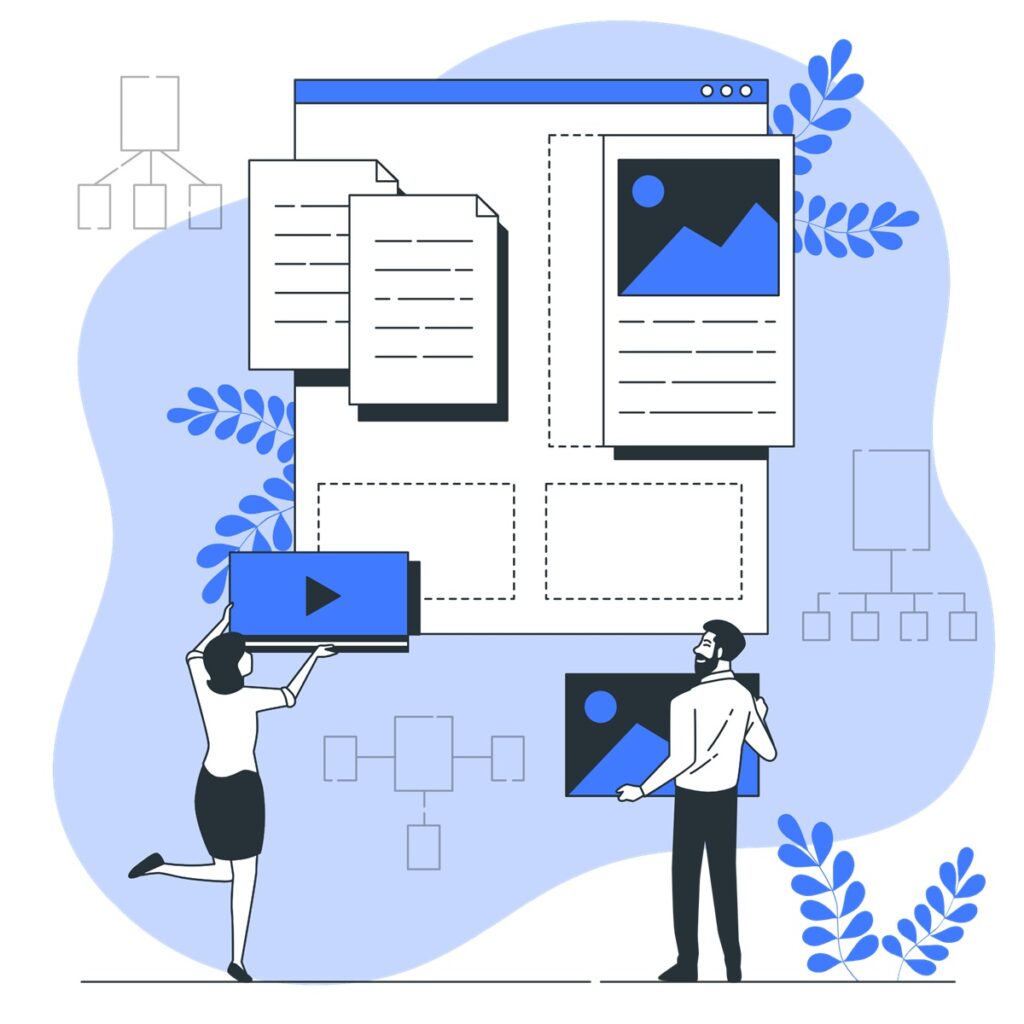
Why it’s key for SaaS: Your software likely fixes tough issues. Your content shows future customers the way. It makes you the expert. Organic traffic is great. People searching for answers find you. That’s high interest.
Action: Stop making random posts. Careate core guides on your main solutions, breaking them down into smaller pieces. Share them everywhere. Your case studies prove that you help people. Show how you make things better.
Example: Project software? Don’t write “5 Meeting Tips.” Make “The Big Guide to Agile Projects.” Then write articles on agile methods, fixing team issues, and project mistakes that cost companies.
2. Search Engine Optimization (SEO)
SEO? It’s the hard work that isn’t flashy. But it helps people find you without constant ads. Ranking higher means more of the right people see you. Most website traffic starts with search. Ignore SEO, and you miss many customers.
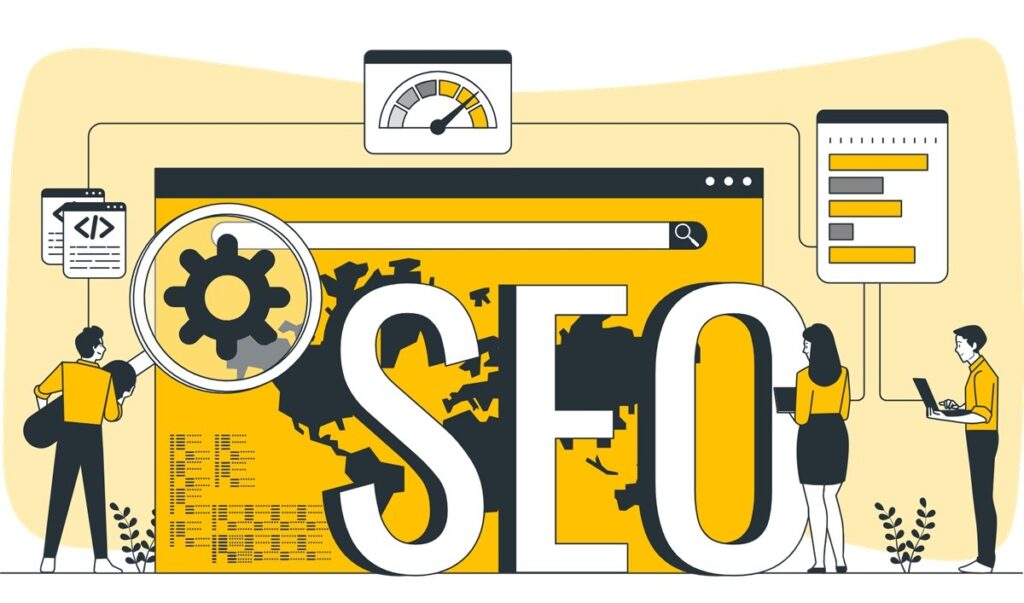
Why it’s key for SaaS: Your SaaS likely solves a specific need. SEO makes sure you’re the answer on Google. Consistent, good leads with money ready? That’s good SEO.
Action: Do keyword research. What do your people search for? Change your website – titles, descriptions, and words with those terms. Get real links from important sites. Also, make sure Google can read your site.
Example: Support software? Focus on keywords like “best help desk software for small business,” “make customer service better,” and “live chat that works with other tools.”
3. Search Engine Marketing (SEM)
SEM, like Google Ads, gives you fast visibility. You pay to be at the front. It needs work, but it can provide good returns. Get two dollars back for every dollar spent? That’s a smart way to find people now.
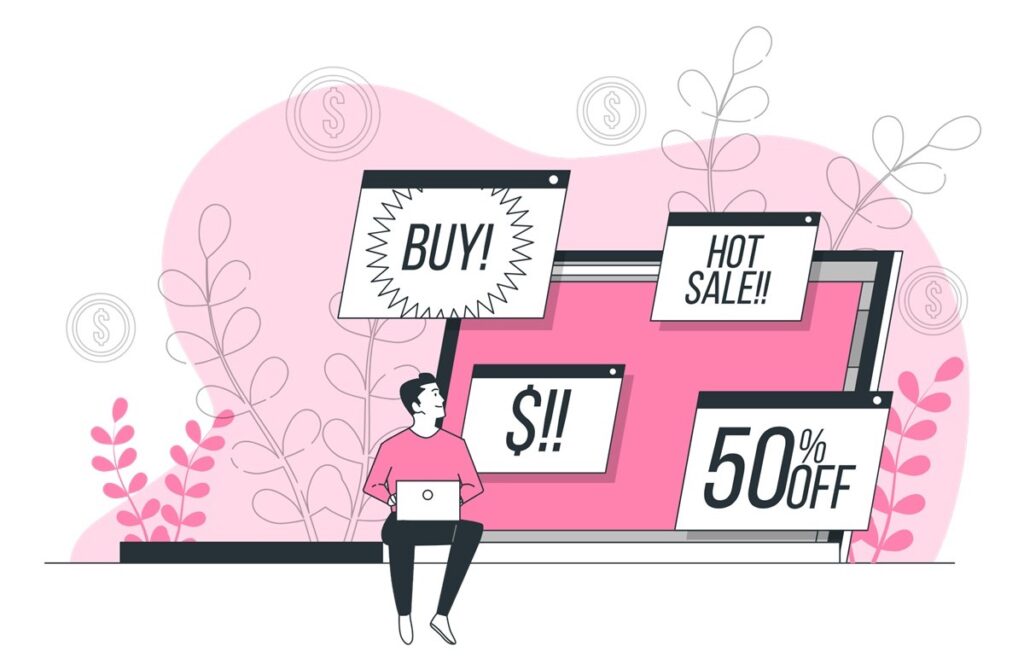
Why is it key for SaaS: New feature? Specific audience? Crowded market? SEM helps you get seen by the right people at the right time.
Action: Do deep keyword research – find the high-interest ones. Write ads that grab attention and say what you offer clearly. Your landing pages must focus on getting clicks to turn into action. Also, remember to retarget people who showed interest before.
Example: Marketing software? Use keywords like “email marketing tools,” “lead help software,” and “marketing campaign tools” in your ads.
4. Email Marketing
Email marketing still works. It’s a direct way to talk to people who said they’re interested. It helps you guide leads, onboard new users, share updates, and keep customers happy. Good open and click rates show it works.

Why it’s key for SaaS: Email lets you talk to your audience directly, even at scale, but still personally. It guides prospects down the sales path, teaches users, and builds long-term relationships that reduce churn.
Action: Offer something valuable for an email address – a guide, a template. Group your list well by what people do, who they are, and how interested they are. Set up automatic welcome emails, lead nurturing, and re-engagement plans. And make your emails personal.
Example: A CRM SaaS should send welcome emails showing new users the main features. They should also send emails about new integrations to current customers.
5. Social Media Marketing
Social media isn’t just for fun. It’s where you build a community, get people talking, drive traffic, and even get leads. Choose the platforms where your ideal customers are. For B2B SaaS? LinkedIn often works best for leads.
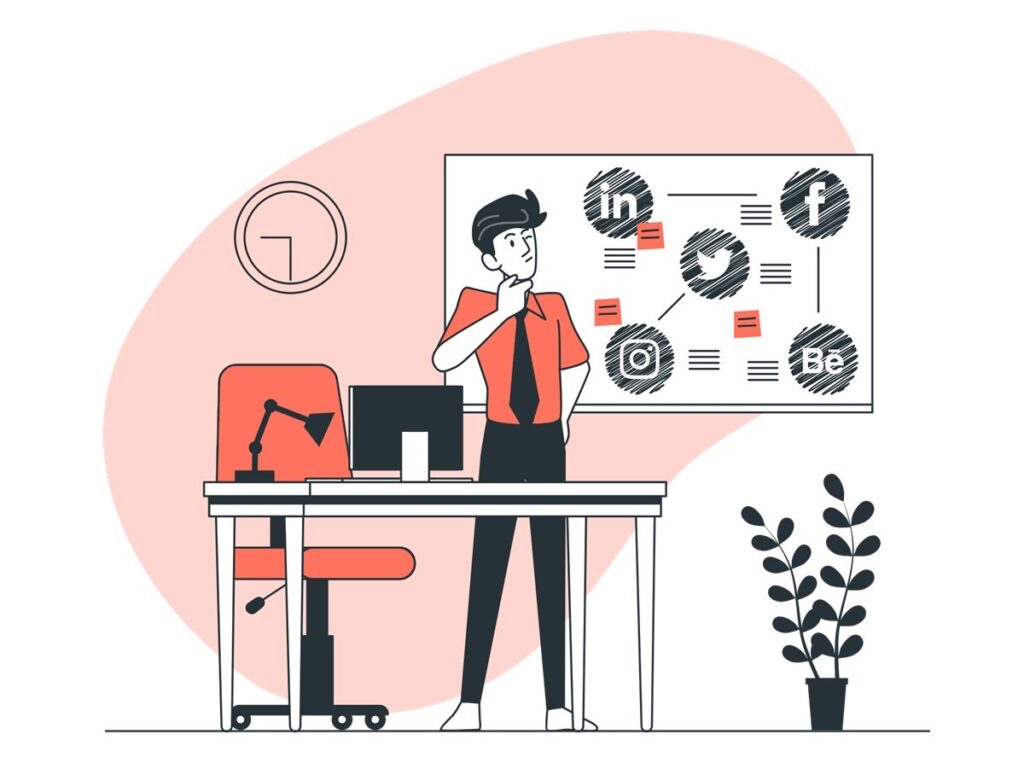
Why it’s key for SaaS: Social media lets you talk directly to people and build a community around your brand. It’s where you share your content, announce news, and even help customers in a relaxed way.
Action: Find out where your people are (LinkedIn for B2B often makes sense). Make content that adds value and starts conversations. Run ads to reach specific people. And actually talk to your followers – reply to comments, answer questions.
Example: A team software could share tips on better teamwork on LinkedIn, run polls on Twitter about remote work issues, and show customer wins on Facebook.
6. Referral Marketing
Referral marketing uses the power of recommendations. People trust what their friends and colleagues say more than ads. Referred customers stay longer and are worth more. It’s a smart move.
Why it’s key for SaaS: Your happy users are your best salespeople. A good referral program gives them a reason to spread the word. High-quality leads that are more likely to stick around? Yes, please.
Action: Make your referral program easy to understand and use. Offer good rewards – discounts, free stuff – for both the referrer and the new customer. Talk about your program on your site, in your product, and in your emails.
Example: A video call SaaS could offer a free month for every successful referral.
7. Affiliate Marketing
Affiliate marketing means working with other businesses or people who have your kind of audience. They promote your SaaS, and you pay them when they send you a paying customer. It helps you reach new people.
Why it’s key for SaaS: You use someone else’s audience and trust. You only pay when you get results. It’s a smart way to grow your reach.
Action: Find affiliates who fit your target market. Offer good commissions and give them the tools they need – banners, links, and content ideas. Track how they do and keep talking to them.
Example: A website hosting SaaS might partner with web developers who suggest their services to clients.
8. Influencer Marketing
Influencer marketing means working with people who have a loyal audience in your area. Their support can build trust fast. It uses their authority to reach people you might miss.

Why it’s key for SaaS: Influencers can reach specific groups that normal marketing might not. Their advice feels real and can change buying decisions, especially in busy markets.
Action: Find influencers whose audience fits your ideal customer and whose values match your brand. Build real partnerships. Explain your SaaS and its value clearly. Track how your campaigns do.
Example: A design SaaS might work with popular designers on Instagram to show how they use the software.
9. Webinars and Virtual Events
Webinars and virtual events let you talk directly to potential customers, show them your product’s power, answer their questions live, and get good leads. They can turn into sales

Why it’s key for SaaS: Webinars let you do deep demos and connect with prospects. Plus, they’re great lead magnets and can be used for more content later.
Action: Pick topics that solve real problems for your audience. Promote your webinars everywhere. Make your presentation and demo great. Leave time for questions. Follow up with attendees with useful info and offers.
Example: A security SaaS could host a webinar on “Protecting Your Business from Cyber Threats,” showing how their product helps.
10. Podcasts
Podcasts reach an audience that often listens closely while doing other things. It helps build brand awareness, share useful ideas, and connect with potential customers through audio.

Why it’s key for SaaS: Podcasts let you connect with people during their commutes or free time. It’s a less pushy way to build brand loyalty and show you know your stuff.
Action: Find relevant podcasts to sponsor or be a guest on. If you start your own, focus on giving real value about your industry and mention how your SaaS can help. Share your podcast on your other channels.
Example: A remote work SaaS might sponsor a podcast about productivity and teamwork in remote settings.
SaaS Marketing Best Practices
The SaaS market is tough. Everyone talks about features and deals. But real growth comes from attracting the right customers who stick around. Forget common advice. These core ideas, done well, will make your SaaS stand out.
1. Define Your Ideal Customer Profile (ICP)
Stop trying to reach everyone. Focus on the perfect customer for you. Know them deeply.Go beyond age and job. Understand their problems and goals. What worries them? What tools do they use now and why?
See how they find solutions. Where do they spend time online? What content do they like? This helps you choose your marketing. Use your customer data. Look at your best customers. What do they have in common? Tools can help you see this.
Your ICP changes. As your SaaS grows, update it. The market changes, so should your view of your customer.
Data shows companies that focus their marketing and sales on a clear ICP grow revenue 10% to 15% faster. Also, understanding your ICP can boost lead quality by 70%.
2. Develop a Strong Value Proposition
In a busy market, your value proposition is key. It clearly says what makes your SaaS special and why customers should pick you.
Talk about benefits, not just features. Don’t say “Our software has great reports.” Say “See clear insights that make your work 20% faster with our easy reports.”Show what makes you different. Is it your tech, support, pricing, or focus? Clearly state your edge.
Use numbers to show your value. Can you save customers time or money? Can you increase their sales? Use data to make your point stronger. Keep it short and clear. People should get it fast. Avoid jargon. Focus on the main benefit.
Research shows companies with strong value propositions grow revenue 3-5 times faster. Customers will pay up to 16% more for clear value.
3. Understand Your Marketing Channels
Not all marketing works the same. What helps one SaaS might hurt another. Know where your ICP spends time online and what they read.
Content Marketing: Make helpful blog posts, articles, and videos. This draws in leads and guides them.
SEO (Search Engine Optimization): Make your website easy to find on search engines when your ICP looks for answers.
Social Media Marketing: Talk to your audience on the right social sites. Build your brand and drive traffic. Focus on where your ICP is.
Paid Advertising (PPC): Use ads on search engines and social media to get leads fast.
Email Marketing: Build an email list and send helpful emails. Guide leads, help new users, and keep current customers.
Affiliate Marketing: Work with others to promote your SaaS. This can reach more people.
Data says content marketing gets 3 times more leads than old methods and costs 62% less. Companies that blog get 97% more website links. Digital ad spending will be huge, so a good paid plan is key.
4. Go Omnichannel (If Needed)
Customers see brands in many places online. An omnichannel approach makes their experience smooth everywhere, from your website to social media to email.
Make it consistent. Your messages, brand look, and support should be the same everywhere. If things don’t match, it can confuse people.
Map the customer journey. See all the ways your ICP interacts with your SaaS. Make each step better. Connect your data. See all customer interactions in one place. This helps you send personalized messages. Personalize at scale. Use data to make each customer’s experience unique across all channels.
Research shows companies with good omnichannel strategies see a 9.5% yearly revenue increase and keep 8.9% more customers. Integrated omnichannel approaches can lift customer happiness by 20%.
5. Offer Lead Magnets, Free Trials and Freemium Models
Get qualified leads and let people try your SaaS. This helps turn them into customers.
Lead Magnets: Offer useful content like ebooks or guides in exchange for contact info. This gets you leads who are really interested.
Free Trials: Give a working version of your SaaS for a limited time. Let people see how it helps before they pay.
Freemium Models: Offer a basic free version of your SaaS. This can bring in many users and give you a chance to sell upgrades later.
Data shows most marketing leads don’t buy because they aren’t nurtured. Lead magnets fix this. Companies with free trials see 66% better conversion rates. Freemium users are 25% more likely to pay than those who only had a free trial.
6. Align Marketing with Sales Funnel
Marketing and sales should work together. This makes sure leads are guided well and move smoothly to sales.
Share goals and numbers. Marketing and sales should agree on what success looks like, like lead quality and sales cost.
Have a clear lead handoff. Know when and how marketing passes leads to sales. Make sure sales have the info they need. Talk often. Marketing and sales should share ideas and feedback to make things better.
Help sales. Give your sales team the content and training they need to close deals from marketing leads.
Research says companies with aligned sales and marketing see 36% higher customer retention and 38% better sales win rates. Aligned teams grow revenue 24% faster.
7. Focus on Customer Success
Getting customers is just the start. Keeping them happy with your SaaS is key for long-term growth.
Help new users get started fast and see the value of your SaaS. Give great support and check in with customers to make sure they are getting the most out of your SaaS.
Ask for feedback often and use it to make your product and service better. Create a community for your users. This can make them more engaged and loyal.
Data shows that a 5% increase in customer retention can boost profit by 25%. People trust recommendations from others, so happy customers are powerful.
8. Track Your Marketing Efforts
You can’t improve what you don’t measure. Track your key marketing numbers to see what’s working and what needs fixing.
Key numbers to watch: website traffic, lead numbers, conversion rates (free to paid, lead to customer), cost to get a customer, how much a customer is worth over time, customer loss rate, and the return on your marketing money.
Use analytics tools. Web analytics, marketing software, and CRM systems can help you track these numbers. Look at reports often. See what’s happening with your marketing. Use this to make better choices.
Test different things. Try different versions of your landing pages or emails to see what works best. Research shows companies that use data in their marketing are much more likely to have an edge and better financial results. Companies that track their marketing ROI are much more likely to see their marketing get better each year.
Top SaaS Marketing Tools
This isn’t about quick wins or showing off. This set of tools builds lasting value, organic reach, involved people, loyal buyers, and a strong brand story. Each tool has a key job in making this happen.
1. Ahrefs for SEO

Ahrefs is a strong SEO software. It’s known for its huge backlink data and keyword tools. It shows how websites perform, helps you check out competitors, and gives content ideas. Digital marketers and SEO pros often use it.
Why Choose Ahrefs?
Pick Ahrefs for its deep backlink information. Other tools have similar features, but Ahrefs has a much bigger database. This helps you find link-building opportunities and understand what competitors are doing. It gives you an advantage, going beyond basic numbers.
It’s not just about links. Ahrefs also has good keyword data and easy-to-read reports. This makes hard SEO tasks simple. If you want to rank high in searches and see how top content works, Ahrefs gives you clear, useful information.
Standout Features
Ahrefs shines with its Site Explorer. This shows detailed backlink profiles and organic traffic for any website. Keywords Explorer gives you many keyword ideas, search volume, and how hard they are to rank for. The Site Audit tool checks for technical SEO problems. Content Explorer finds popular content.
Integrations
Ahrefs connects with tools like Looker Studio. This lets you get data for your own reports. It doesn’t have as many direct connections as some bigger marketing tools. But you can take its data out and use it with other tools for more analysis and reports. This fits into how you already work.
Latest Advancements
Ahrefs recently added new features. These include AI Overview tracking for better search results analysis and keyword comparisons. They also started a program to certify SEO professionals. “Patches” in Site Audit offer one-click fixes for website issues, making technical SEO easier.
Pros:
- Great keyword data and ideas
- Results can be filtered for exact research
- Full backlink analysis
Cons:
- Expensive
- Search volume data can be wrong
- Not many search for “credits” on cheaper plans
Pricing
Ahrefs has a free “Webmaster Tools” plan for website owners who verify their site. Paid plans begin at $29 each month.
G2 User Rating – 4.5 out of 5 stars
2. Google Ads for PPC Advertising
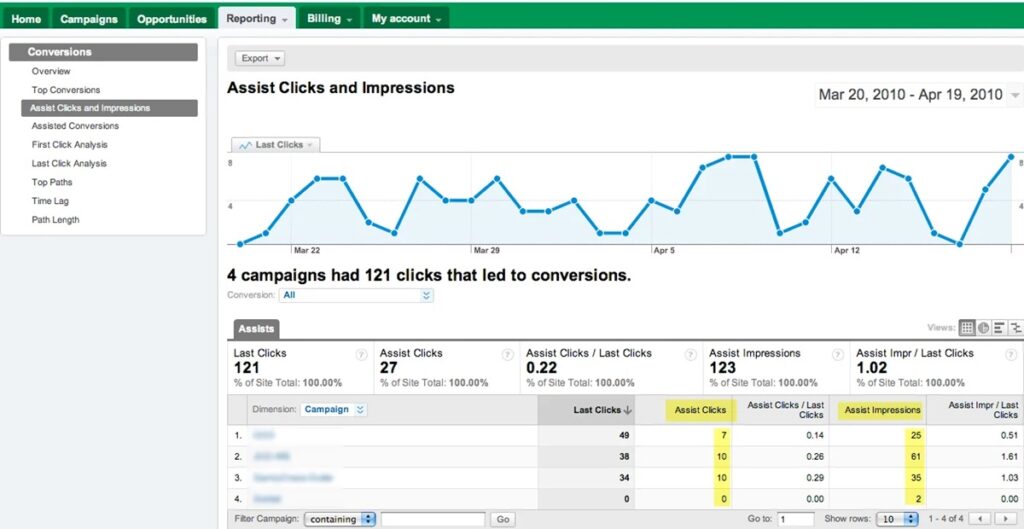
Google Ads is the top online ad platform. It’s known for its pay-per-click (PPC) system. Businesses use it to get seen fast on Google Search, YouTube, and many websites. It’s a quick way for buyers to find what you sell right when they’re looking.
Why Choose Google Ads?
You want attention now. Google Ads gives it. It’s not just about getting eyes on your business. It’s about getting the right eyes. You can target people likely to buy. This means using keywords, location, or what people do online. SEO takes time. Google Ads works right away. It brings traffic and sales as soon as your ads are live.
This isn’t just about speed. It’s about having control. You set your budget. You can change plans quickly. You can track every click, view, and sale. No other platform reaches as many people or gives you as much data. If you need to be seen and make sales, Google Ads is the only real choice.
Standout Features
Google Ads has strong features. Performance Max campaigns use Google’s AI. They find your best customers across all Google sites from one campaign. Responsive search ads and custom ad text make your message fit the user. This gives them a good, personal experience. The platform also has smart ways to bid. It tracks sales in detail. It also shows ads again to people who have already shown interest.
Integrations
This tool works well with other key platforms. This makes your reach and data better. It connects with Google Analytics for deeper user info. It works with HubSpot and Salesforce for customer tracking. Mailchimp is good for email marketing. Shopify works for online stores. You can also link it with Google Sheets, CallRail, and many marketing tools using Zapier. This builds a strong, connected marketing system.
Latest Advancements
Google Ads is always getting better. Recent updates focus on AI to make display ads. There are also better controls for where search ads appear. Performance Max campaigns now show more details. AI also helps create new ad parts. It lets advertisers make static images move and make videos better right in the platform. The move to using your customer data and better privacy means smarter, more proper targeting.
Pros:
- See results fast.
- Target specific groups of people.
- Get clear data and see how much money you make.
Cons:
- It can be hard to learn.
- It can cost a lot in popular areas.
- Needs constant checking and changes.
Pricing
Google Ads has no free plan. You only pay when someone clicks your ad. Monthly costs are usually $100 to $10,000. This depends on your business and ad plan.
G2 User Rating – 4.1 out of 5 stars (based on Google Marketing Platform reviews, which include Google Ads)
3. HubSpot for Email Marketing
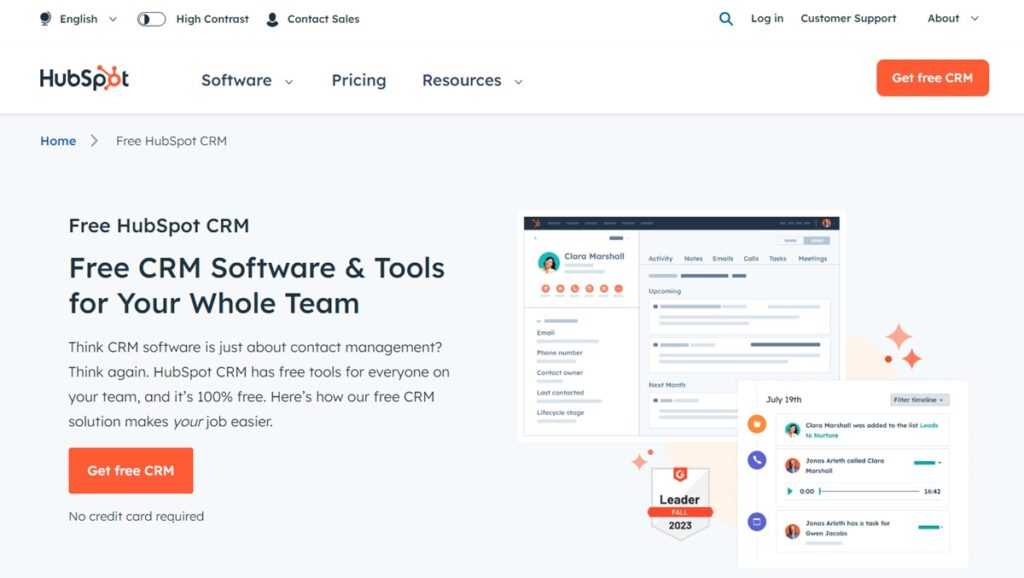
HubSpot is your all-in-one customer platform. It brings together your marketing, sales, and customer service. This helps you get leads, connect with customers, and grow your business. It’s known for its built-in CRM and inbound marketing.
Why Choose HubSpot?
Many tools do just one thing. HubSpot gives you a complete set of tools. You won’t need to juggle many software programs. This means less hassle, teams that work better together, and a clear view of your customer’s journey. It’s about building a good system, not just adding features.
You get a platform made to make things simpler. Instead of patching systems together, HubSpot gives you one place where data moves easily between marketing, sales, and service. This integration helps you act faster and be more flexible. You turn ideas into action without delay.
Standout Features
HubSpot’s main strength is its single approach to customer management. It has good sales pipeline tracking, strong marketing automation for leads, and service tools like tickets and knowledge bases. It’s AI tools for making content, finding sales leads, and helping customers stand out. They make old manual tasks fast.
Integrations
The platform works well with other tools. HubSpot connects deeply with many popular apps. Think Salesforce for CRM, LinkedIn for social selling, Zapier for custom automation, and Capterra for review data. All these keep your current tech working.
Latest Advancements
HubSpot keeps making things better. New updates include AI social media agents that make posts for your brand and audience. You can create properties faster right from CRM pages, which helps workflows. The Breeze Copilot Workflow Builder lets you make and change workflows by just talking. They are also adding custom deal measures and better data model building for a more personalized experience.
Pros:
- All-in-one platform for sales, marketing, and customer service.
- Easy to use.
- Strong automation.
Cons:
- It can get costly as you grow and need more features.
- Changing things around, while better, might still feel limited for complex work.
- Some users say it takes time to learn advanced features.
Pricing
HubSpot has a strong free CRM plan with up to 1,000,000 contacts. Paid plans for individual “Hubs” like Sales or Marketing start at $20/month per user.
G2 User Rating – 4.4 out of 5 stars
4. Hootsuite for Social Media Marketing
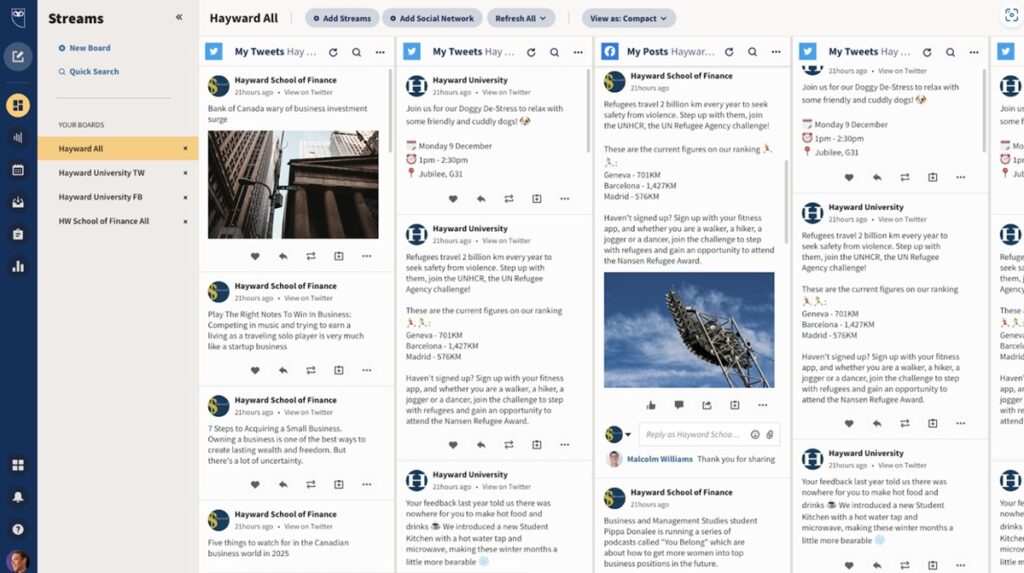
Hootsuite helps you run your social media. It’s the top platform for businesses to manage, schedule, and look at their content on many social networks. Think of it as making your online presence simple.
Why Choose Hootsuite?
You’re playing a different game. Most tools are old, handling just a few networks. Hootsuite breaks that mold. It gives you one dashboard for almost every important platform. It’s more than just posting. It’s about being in charge, getting ideas, and growing your social reach without the usual trouble.
Hootsuite isn’t just about being seen. It’s about making every social talk count. Other tools offer basic scheduling. Hootsuite gives you deep data and audience connections. It tells you what happened, why, and what to do next. This is for people who want facts to make choices, not just pretty reports.
Standout Features
Hootsuite’s main strength is its wide scheduling across many networks. It offers real-time social listening and strong data that tracks everything from engagement to feelings. It’s a single inbox that brings all your messages together, cutting through the noise. It also has AI to help create captions and post ideas, helping you win the content game.
Integrations
Hootsuite works with many other tools. Popular ones include Google My Business for review checks, Salesforce for customer data, and Canva for making content right inside the platform. It helps you build a workflow that actually works, without switching between a dozen different apps.
Latest Advancements
Hootsuite keeps getting better with AI. It has OwlyWriter AI for caption making and post ideas. Recent updates also bring better team features, improved data templates for clearer reports, and a new Pixel Connector for better ad tracking.
Pros:
- One place for social media work
- Good scheduling options
- Full data and reports
Cons:
- Social listening might cost extra
- Some find the layout too much
- Higher prices for advanced features
Pricing
Hootsuite no longer has a free plan. But you can get a 30-day free try. Paid plans start at $99 a month when paid yearly.
G2 User Rating – 4.2 out of 5 stars
5. Canva for Designing
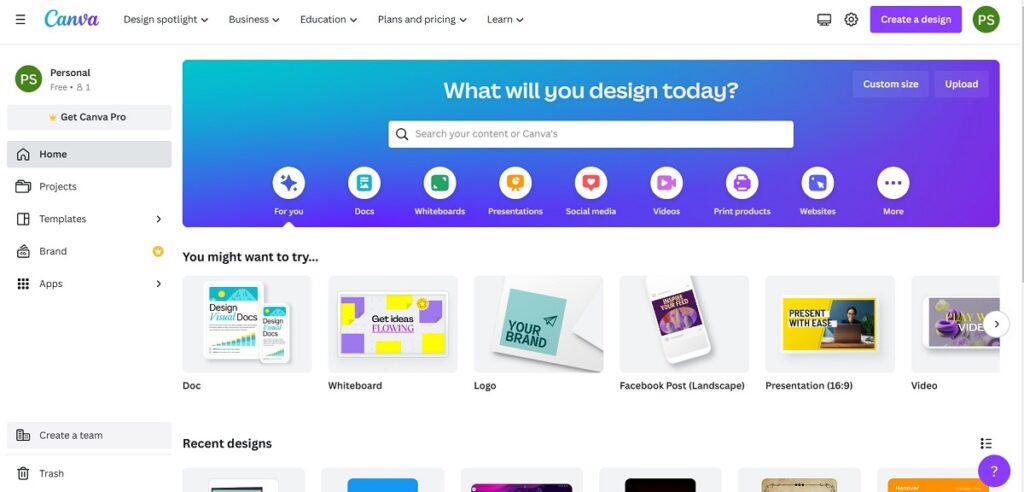
Canva is your go-to for visual communication. It’s for making great social media graphics, presentations, and print products easily. Canva makes design simple for everyone.
Why Choose Canva?
Canva is popular because it’s quick and easy. You don’t need a design degree to make professional-looking visuals. Its drag-and-drop setup and huge template library let you create strong content in minutes, not hours.
It makes the design open to all. Businesses of any size can keep their brand looking the same without spending a lot. Canva helps you turn ideas into pictures quickly, without a steep learning curve.
Standout Features
Canva’s best features include its AI-powered Magic Studio. This offers tools like Magic Edit for changing objects right away and Magic Write for custom text. The Brand Kit helps keep your brand consistent across all designs. The content planner lets you post to social media straight from the platform. Its photo and video editors are powerful too, making hard edits and animations simple.
Integrations
Canva works well with other tools. It connects with Google Drive, Google Sheets, Jotform, and Airtable for smooth content flow. Through Zapier, it links to thousands of apps. This automates tasks and gets your designs where they need to go, from social media to marketing.
Latest Advancements
Canva’s newest steps forward are big on AI. Their “AI Everywhere” plan brings features like AI chat for project creation, Canva Code for interactive designs without coding, and Magic Charts for data. Recent updates also include better photo editing with AI backgrounds and object removal. Plus, there’s one work area in the Visual Suite for all your projects.
Pros:
- Easy to use
- Lots of templates
- Good for teamwork
Cons:
- Less advanced custom options than pro software
- Needs internet to work
- Some best features cost money
Pricing
Canva has a free plan with basic tools. Canva Pro starts at $12.99 a month if you pay yearly.
G2 User Rating – 4.7 out of 5 stars
6. Referral Factory for Referral & Affiliate Marketing

Referral Factory helps businesses get more customers. It’s a marketing tool for making and running referral programs. It takes care of asking for referrals, tracking them, and giving rewards. This tool is for businesses that want their current customers to bring in new leads.
Why Choose Referral Factory?
This is more than a basic referral tool. Referral Factory aims to get results, not just track referrals. You can build custom referral programs fast, often in minutes, without any code. It has over 1000 ready-to-use templates. Other tools may offer fewer choices, but Referral Factory gives you a lot of say in how your campaigns look, what rewards you give, and how things run on their own. You decide what success means and how to reward it, whether with cash, gift cards, or special prizes.
Stop tracking things by hand or using many systems. Referral Factory puts everything in one spot. It connects with your current tools to make the whole referral process automatic. This means you spend less time on office work and more time growing your business. You can grow your referral efforts without hiring more people. It makes your referral program a smooth, good way to get new business.
Standout Features
Referral Factory stands out with its drag-and-drop builder for making your referral pages and emails look like your brand. It has many reward choices, like set amounts, commission payments, coupons, and custom rewards, in many currencies. The platform also checks for fraud and gives you full reports. You get real-time facts about how well your referrals are doing, so you know what’s working.
Integrations
For connections, Referral Factory links with key business tools like HubSpot, Salesforce, Stripe, Pipedrive, Intercom, and Zoho. It also works with Zapier, webhooks, and an API for special connections. This makes it easy to share information and make tasks automatic with your CRM, marketing automation, and payment systems.
Latest Advancements
The newest updates include a better Referral Factory App for Affiliates. It has an AI Match feature that automatically links users with good affiliate chances. There are also fixes for making profiles easier to find and for better notifications. This makes the platform smarter and easier to use for handling affiliate relationships.
Pros:
- Easy to set up and use
- Lots of templates
- Great customer help
Cons:
- Less custom work on cheaper plans
- Extra cost for a custom web address
- Fewer users allowed on some plans
Pricing
Referral Factory has a 15-day free trial. Paid plans start at $95 per month.
G2 User Rating – 4.8 out of 5
7. Afluencer for Influencer Marketing
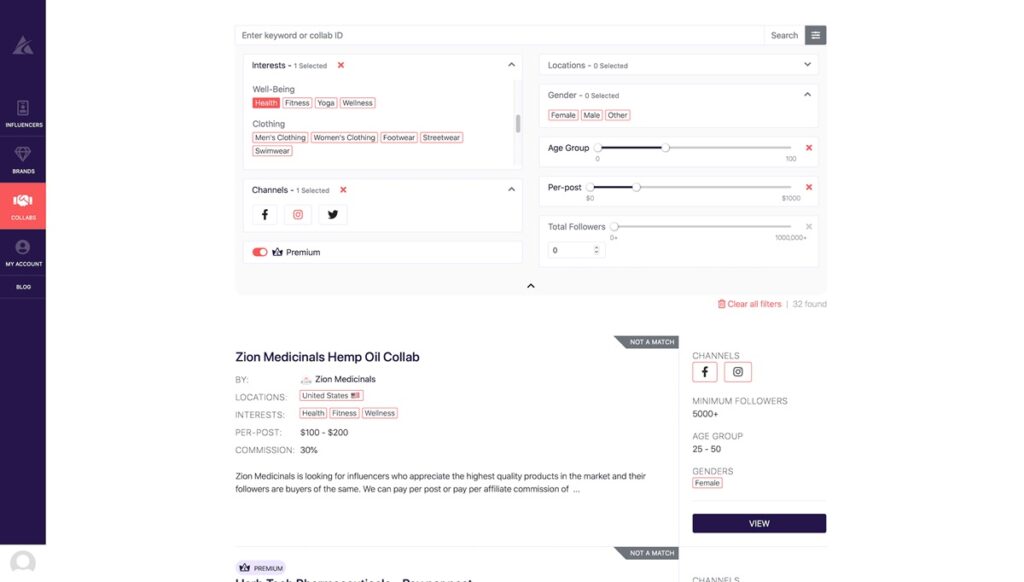
Afluencer links brands with influencers and content creators. It’s known for making campaign management easy and letting brands and creators talk directly for real partnerships.
Why Choose Afluencer?
Afluencer cuts through the noise, offering a straightforward path to genuine collaborations. It stands out by giving brands direct access to a curated network of influencers, from small to big. This helps make connections that truly matter. You control the story, finding creators whose audience really fits your brand. This makes sure every campaign hits its mark.
This isn’t about vague numbers. It’s about real people building real influence. Afluencer makes the whole process simple. It’s easy to find, connect with, and manage partnerships. It’s built for good outcomes, helping you turn influencer connections into real marketing wins.
Standout Features
Afluencer’s best features include smart match filters. These let you find influencers by interests, audience, and niche. In-app messages and notifications help with smooth talks. It also has features like custom partner profiles and the ability to invite partners directly. This gives you close control over your work together.
Integrations
Afluencer works well with big names. It connects right to e-commerce sites like Shopify and BigCommerce. This makes sending products and tracking sales easier. Beyond that, it links to major social media sites such as Instagram, TikTok, YouTube, and Facebook. This gives you one place to handle your influencer presence.
Latest Advancements
Afluencer keeps getting better. It focuses on making its matching tools and user experience better. Recent updates made brand-influencer connections simpler and campaign data clearer. This leads to faster insights and better choices.
Pros:
- Easy to use, simple to get around.
- Many brands and chances to work together.
- Talk directly with brands and influencers.
Cons:
- Brands can sometimes be slow to reply.
- Not many features for bigger businesses on the free plan.
- No iPhone app right now.
Pricing
Afluencer has a free plan for both brands and influencers. Brand premium plans start at $49 each month.
G2 User Rating – 4.6 out of 5 stars
8. Livestorm for Webinars
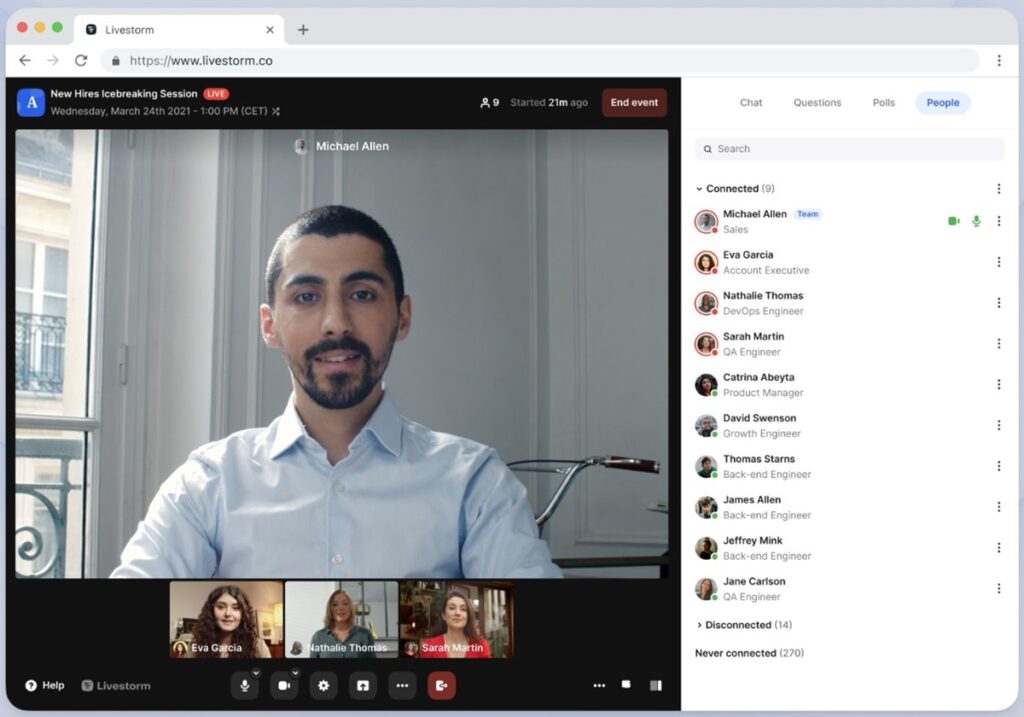
Livestorm helps you host online gatherings. It’s a single platform for webinars, virtual meetings, and online events. Use it for product demos, customer training, or marketing campaigns. Livestorm makes your virtual connections simple.
Why Choose Livestorm?
This isn’t just another video program. Livestorm works right in your browser. No downloads needed for anyone. It’s made to get your audience involved. It has features that make talking easy.
Setup is simple, even for big events. It also has tools to do the boring parts automatically. Livestorm makes your virtual events look good and have an effect. It cuts through the noise with direct features.
Standout Features
Livestorm is great for audience interaction. You get live polls, Q&A, chat, and breakout rooms to keep people interested. Also, on-demand webinars and instant replays mean your content works harder. It reaches more people.
Integrations
It works well with your current tech. Livestorm connects with popular CRMs like HubSpot and Salesforce. It also works with marketing tools like Marketo. There’s a strong API for custom connections. This means smooth data flow. No more manual copying.
Latest Advancements
Livestorm keeps making its platform better. They focus on easy-to-use screens and better security. Recent updates make things smoother for hosts and people attending. They also keep making performance and stability better.
Pros:
- Easy to use for hosts and attendees.
- Good interactive features like polls and Q&A.
- Great CRM connections, especially with HubSpot.
Cons:
- Limited ways to change how it looks.
- Users sometimes report technical problems.
- The price can be an issue for some.
Pricing
Livestorm has a free plan. It has limits: up to 30 people for 20 minutes. Paid plans start at $79 per month if you pay yearly.
G2 User Rating – 4.7 out of 5
9. Spotify for Podcasting
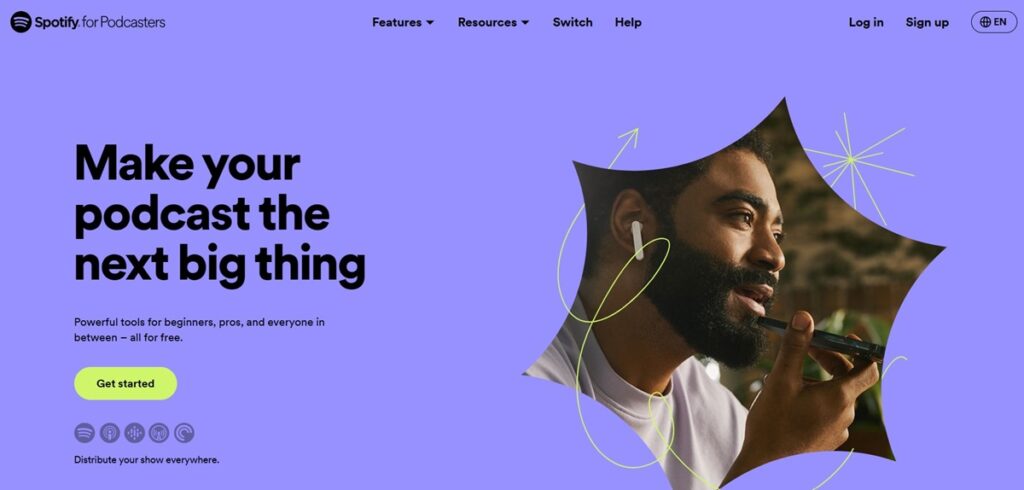
Spotify brings millions of songs, podcasts, and audiobooks to you. It’s known for its huge library and personal music picks. It’s more than a music app; it’s your sound guide.
Why Choose Spotify?
You want to find new music. Spotify’s system looks at what you listen to. It then gives you playlists like Discover Weekly and Daily Mixes. These always show you new songs you’ll like. Other services have music, but Spotify connects you to sound. It knows your taste even before you do.
It’s not just about playing songs. Spotify creates a full audio journey. You can share music with friends. It also works the same on all your devices. You get control, discovery, and a platform that feels like it was made for you.
Standout Features
Spotify’s best features include its AI Playlist maker. This creates playlists for any mood. You can also make playlists with friends. And you can save songs from Instagram stories right into Spotify. “Spotify Wrapped” shows you what you listened to all year. No one else has this powerful recap.
Integrations
Spotify works with most of your devices. This includes Google Home, Amazon Alexa, Apple HomePod, and even car systems. It also connects with Discord for shared listening. You can use it with Google Sheets for music data. And even ChatGPT for fun audio tests through Zapier.
Latest Advancements
New updates focus on making things more personal and social. They added AI to create playlists. Podcast comments are better for listeners. And saving songs from social media is easier. They are changing how you listen to audio.
Pros:
- Lots of music
- Great personal song picks
- Easy to use
Cons:
- Ads on the free plan
- Limited offline listening on the free plan
- Artists may get low pay
Pricing
Spotify has a free plan with ads. Premium Individual plans start at $119 per month in India. Prices can change by region.
G2 User Rating – 4.2 out of 5 stars
Conclusion
You get it. SaaS marketing isn’t some trick. It’s knowing your people. It’s showing you understand them. It’s giving them worth, again and again. Forget quick fixes. Forget what’s new and shiny. Real growth comes from steady, useful content. It comes from true connections. It comes from a product that fixes a real problem. Build a community, not just a list.
The tools? They help. Ahrefs shows you what people search for. Google Ads helps your message get seen. HubSpot keeps talks going. Hootsuite manages social media. Canva makes you look good. Referral Factory turns fans into sellers. Afluencer connects you with trusted people. And Spotify? It’s another way to reach your audience’s vibe.
But you’re the leader. You need a clear view. Know your ideal customer well. Craft a message that clicks. Choose the places where your people listen.
This isn’t a quick run. It’s a long one. It needs patience. It needs consistency. It needs a real wish to help your users win. Get the basics right. Know your audience. Give real worth. Build lasting ties. Then growth will happen. There’s a lot of noise. But a clear, real connection cuts through it. Now, build something that matters. Let the right people find you.
😎 Also check out some more articles related to SaaS Marketing –
SaaS Sales 101: A Beginner’s Guide for 2024
20 Best SaaS Tools for Businesses in 2024
